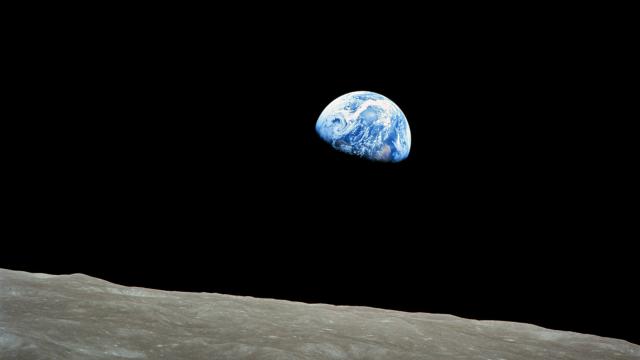Today is the 45th anniversary of Earthrise. We take it for granted now but, along with Blue Marble, it’s the most important and famous photo ever taken. In a world saturated with fakery and cynicism, it’s easy to ignore the magnitude of its impact. But in 1968, this photo changed everything.
To commemorate its anniversary, NASA Goddard has produced this video explaining exactly how this seminal image was taken:
Nowadays people don’t stop to think twice about what they’re seeing — that precious blue jewel engulfed in the pitch black nothingness of space. However, this was a vision that deeply affected the view of ourselves as species and our place in the world and the universe. Earthrise truly made everyone realise that we’re all living in a fragile tiny ball that we needed to protect in order to survive. Humans are — for now — alone in the void.
Some of the immediate and most obvious effects of these images were the promotion and passing of the Clean Water Act the Clean Air Act in the US, and the first Earth Summit, the UN Conference on the Human Environment. At the private level, people started to organise worldwide non-for-profit organisations, like Greenpeace or Doctors Without Borders.
It’s not a coincidence that Earthrise is the “cover photo of TIME’s Great Images of the 20th Century, and is the central photo on the cover of LIFE’s 100 Photographs That Changed the World.” In the words of Ernie Wright, project lead with the Scientific Visualisation Studio at NASA’s Goddard Space Flight Center:
Earthrise had a profound impact on our attitudes toward our home planet, quickly becoming an icon of the environmental movement.
In his book Earthrise: How Man First Saw the Earth, Robert Poole also talks extensively about it:
A newer strand of thought rose with the Earth: reverence for the environment. ‘No man ever before has looked at the world in one piece and told us about it,’ said the Sunday Denver Post. ‘Perhaps with the new understanding will come reverence for our planetary home and for the uniqueness of life.’ ‘We should cherish our home planet,’ advised the Christian Science Monitor. ‘Men must conserve the Earth’s resources. They must protect their planetary environment from spreading pollution. They have no other sanctuary in the solar system. This, perhaps, is the most pertinent message for all of us that the astronauts bring back from the Moon.’
Or in the words of Apollo 8 Commander Frank Borman and crew members William A. Anders and James A. Lovell:
Borman: Oh my God! Look at that picture over there! Here’s the Earth coming up. Wow, that is pretty!
Anders: Hey, don’t take that, it’s not scheduled.
Borman: (Laughter). You got a colour film, Jim?
Anders: Hand me that roll of colour quick, will you –
Lovell: Oh man, that’s great!
Anders: Hurry. Quick… Lovell: Take several of them! Here, give it to me…
Borman: Calm down, Lovell.
